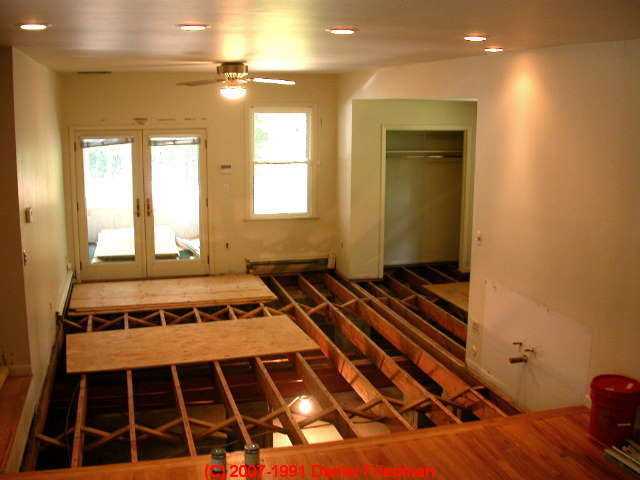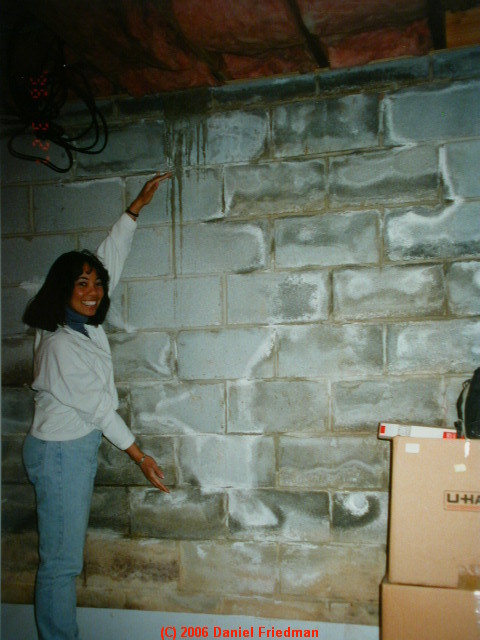 Q&A on Important Things to Do After a Successful Mold Cleanup
Q&A on Important Things to Do After a Successful Mold Cleanup
- POST a QUESTION or COMMENT about key things to do after a mold remediation job
Mold remediation cleanup final steps: here we explain other important steps to take after a mold cleanup project has been completed.
InspectAPedia tolerates no conflicts of interest. We have no relationship with advertisers, products, or services discussed at this website.
- Daniel Friedman, Publisher/Editor/Author - See WHO ARE WE?
After the Mold Cleanup Addressing Other Leaky or Moldy Building Areas Can Prevent a New Mold Problem
Addressing Other Leaky or Moldy Building Areas Can Prevent a New Mold Problem
This article is part MOLD CONTAMINATION ACTION GUIDE which provides an easy to understand step-by-step guide for dealing with toxic or allergenic indoor mold and other indoor contaminants: what to do about mold "mildew," moisture, in your house or office, building-related illness, involving your physician, treatment, sick building investigators, reduction of irritants, and special products to help clean buildings and air.
Some building owners make the mistake of insisting that only limited areas of a moldy building be addressed, or they do not repair other building leaks. This can be a serious and expensive mistake.
Our photo (left) show roof spillage leaking through a basement foundation wall. Unless this leak condition is corrected, the cost of a building mold cleanup project could be quickly wasted, or have to be repeated.
Inspect the building after the mold cleanup has been completed, and before the area is reoccupied (if it has been empty) to be sure that you do not see any evidence of leaks, water entry, or new mold growth.
When leak-damage, mold, or suspect areas remain in a building following a mold related remediation, the insurance company, contractors, and inspector could express confidence only in the specific areas treated and only at the single point in time of the final successful clearance inspection.
The building remains at risk of future discovery of a separate pre-existing or new mold or water damage problem caused by new moisture or leak problems and potentially exacerbated by mold inoculation from pre-existing un-remediated areas.
To avoid a future mold contamination problem in a building after toxic or allergenic moldy materials have been removed, after the building has been successfully cleaned, and after a competent mold inspector has verified that the cleanup was successful, review the steps we discuss
...
Reader Comments, Questions & Answers About The Article Above
Below you will find questions and answers previously posted on this page at its page bottom reader comment box.
Reader Q&A - also see RECOMMENDED ARTICLES & FAQs
Question:
MM • a year ago
Our house is undergoing mold remediation (mainly for cladosporium and aspergillus/penicillium found in the HVAC closet and potentially the unit and ducts themselves). My question is should our home/furnishings/belongings be tested post remediation or will the replacement of the HVAC unit and gut job of the HVAC closet suffice?
Moderator reply:
If the containment and cleanup are properly-conducted then other areas of the home - out of the work area - including furnishings ought not be contaminated by dust generated by the cleanup procedure itself.
Regrettably if you test other areas or furnishings (not included in the cleanup) only after the remediation, and if you find that more cleaning is needed, you'll have a fight with the mold remediator who will want to charge you for that. You could avoid that by testing out-of-containment-area furnishings and living area both before and after the remediation job.
If you are really replacing the entire HVAC system (sounds extreme) then provided the rest of the cleanup is done properly and the new HVAC system and duct work etc. are not operated until after a successful mold clearance inspection then you've avoided contaminating the new equipment.
In general we don't bring new furnishings or equipment into the remediation area until after the cleanup is certified as complete.
Question:
Robert Buenting · May 6, 2017
After my room was remediated and wallboard that was moldy removed as well as 24 inches from the last mold, the good wallboard seam between what was removed and the good was sealed with tape and plastic. Then an air clearance test was performed. Should this seam have been sealed?
Moderator reply:
That sounds reasonable to me.
...
Continue reading at MOLD CLEARANCE TEST, SUCCESSFUL or select a topic from the closely-related articles below, or see the complete ARTICLE INDEX.
Or see these
Recommended Articles
- ACCURACY OF AIR TESTS for MOLD
- CHOOSE a FLOOD DAMAGE RESTORATION or MOLD REMEDIATOR
- HOW TO PREVENT MOLD
- MOLD ACTION GUIDE - WHAT TO DO ABOUT MOLD
- MOLD CLEANUP COMPANIES
- MOLD CLEANUP - MISTAKES to AVOID
- MOLD CLEARANCE: FOLLOWUP STEPS
- MOLD CLEARANCE INSPECTIONS
- MOLD CLEARANCE PROCEDURES when, where, and how a post mold remediation job inspection and test should be performed
- MOLD CLEARANCE TIMING
- ACCEPTABLE MOLD LEVEL
- MOLD CLEANUP, VISUAL CHARACTERISTICS
- MOLD LEVELS IN BUILDINGS
- MOLD CLEARANCE: FOLLOWUP STEPS
- MOLD CLEARANCE TEST, SUCCESSFUL
- MOLD / ENVIRONMENTAL EXPERT, HIRE ?
- MOLD INSPECTORS & MOLD TESTERS
- MOLD PREVENTION GUIDE
- MOLD RESISTANT CONSTRUCTION
- WHEN TO STOP LOOKING FOR MOLD
Suggested citation for this web page
MOLD CLEARANCE: FOLLOWUP STEPS at InspectApedia.com - online encyclopedia of building & environmental inspection, testing, diagnosis, repair, & problem prevention advice.
Or see this
INDEX to RELATED ARTICLES: ARTICLE INDEX to BUILDING ENVIRONMENT
Or use the SEARCH BOX found below to Ask a Question or Search InspectApedia
Ask a Question or Search InspectApedia
Try the search box just below, or if you prefer, post a question or comment in the Comments box below and we will respond promptly.
Search the InspectApedia website
Comments & Questions are Welcome Here
If you posted comments here and no longer see what you wrote, please check for your comment in the Reader Q&A found above on this page.
Citations & References
In addition to any citations in the article above, a full list is available on request.
- In addition to citations & references found in this article, see the research citations given at the end of the related articles found at our suggested
CONTINUE READING or RECOMMENDED ARTICLES.
- Carson, Dunlop & Associates Ltd., 120 Carlton Street Suite 407, Toronto ON M5A 4K2. Tel: (416) 964-9415 1-800-268-7070 Email: info@carsondunlop.com. Alan Carson is a past president of ASHI, the American Society of Home Inspectors.
Thanks to Alan Carson and Bob Dunlop, for permission for InspectAPedia to use text excerpts from The HOME REFERENCE BOOK - the Encyclopedia of Homes and to use illustrations from The ILLUSTRATED HOME .
Carson Dunlop Associates provides extensive home inspection education and report writing material. In gratitude we provide links to tsome Carson Dunlop Associates products and services.

